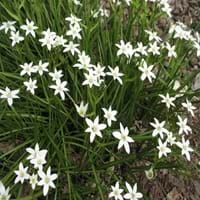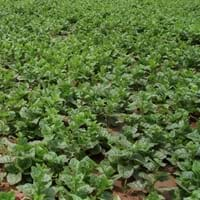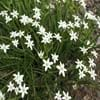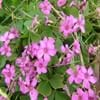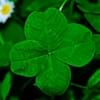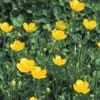Life Span
Perennial
Perennial
Type
Bulb or Corm or Tuber
Vegetable
Origin
Eastern Europe, Southern Europe, Turkey
Southeastern Asia, India
Types
Not Available
Red Malabar Spinach, Green Malabar Spinach
Habitat
Cultivated Beds, meadows
Hot climate regions, Humid climates
USDA Hardiness Zone
5-8
Not Available
Sunset Zone
21,22
H1, H2, 3a, 3b, 4, 5, 6, 7, 8, 9, 10, 11, 12, 13, 14, 15, 16, 17, 18, 19, 20, 21, 22, 23, 24
Habit
Clump-Forming
Vining/Climbing
Flower Color
White, Light Green, Silver
Red, Green, Orange Red
Flower Color Modifier
Bicolor
Bicolor
Fruit Color
Not Available
White, Ivory
Leaf Color in Spring
Green
Green, Light Green
Leaf Color in Summer
Light Green
Green, Dark Green
Leaf Color in Fall
Several shades of Green
Purple, Gray Green
Leaf Color in Winter
Light Green
Purple, Gray Green
Leaf Shape
Oblong-lanceolate
Heart-shaped
Plant Season
Spring
Spring, Summer, Fall, Winter
Sunlight
Full Sun, Partial Sun, Partial shade
Full Sun, Partial Sun, Partial shade
Type of Soil
Clay, Loam, Sand
Clay, Loam
The pH of Soil
Acidic, Neutral, Alkaline
Neutral
Soil Drainage
Well drained
Well drained
Bloom Time
Early Spring, Spring
Not Available
Tolerances
Drought
Drought
Where to Plant?
Container, Ground, Pot
Ground
How to Plant?
Seedlings
Leaf Cutting, Seedlings
Plant Maintenance
Medium
Medium
Watering Requirements
Average Water Needs
Do not let dry out between waterings, Requires consistently moist soil
In Summer
Lots of watering
Average Water
In Spring
Moderate
Moderate
In Winter
Average Water
Average Water
Soil pH
Acidic, Neutral, Alkaline
Neutral
Soil Type
Clay, Loam, Sand
Clay, Loam
Soil Drainage Capacity
Well drained
Well drained
Sun Exposure
Full Sun, Partial Sun, Partial shade
Full Sun, Partial Sun, Partial shade
Pruning
No pruning needed
Remove damaged leaves, Remove dead leaves
Fertilizers
Water soluble fertilizers
Nitrogen
Pests and Diseases
No serious insect or disease problems
Aphids
Plant Tolerance
Drought
Drought
Flower Petal Number
Single
Single
Foliage Texture
Medium
Medium
Foliage Sheen
Glossy
Glossy
Attracts
Insects
Not Available
Allergy
Dermatitis, Poisonous to grazing animals
Not Available
Aesthetic Uses
Beautification, Showy Purposes
Not Used For Aesthetic Purpose
Beauty Benefits
Not Available
Not Available
Environmental Uses
Air purification
Air purification
Medicinal Uses
Certain forms of cancer, Homeopathy
Folate, Iron, Low calories, Low Fats, Rich in Potassium, ß-carotene, Vitamin A, Vitamin C
Part of Plant Used
Root
Leaves
Other Uses
Used As Food
Used As Food
Used As Indoor Plant
Yes
No
Used As Outdoor Plant
Yes
Yes
Garden Design
Alpine, Container, Mixed Border, Rock Garden / Wall
Container, Edible, Groundcover, Herb / Vegetable, Tropical, Vine
Botanical Name
ORNITHOGALUM balansae
BASELLA alba
Common Name
Star-of-Bethlehem
Ceylon Spinach, Malabar Spinach, Red Malabar Spinach
In Hindi
Star-of-Bethlehem
पोई
In German
Stern -of- Bethlehem
Malabarspinat
In French
Star- de - Bethléem
L’épinard de Malabar
In Spanish
Estrella de Belen
espinaca de Malabar
In Greek
Star- of- Βηθλεέμ
Malabar Σπανάκι
In Portuguese
Star of -Bethlehem
Malabar espinafre
In Polish
Star- of- Betlejem
Szpinak Malabar
In Latin
Star of Bethlehem ,
Spinach Malabar
Phylum
Magnoliophyta
Magnoliophyta
Class
Lilopsida
Eudicotyledones
Order
Liliales
Caryophyllales
Family
Asparagaceae
Basellaceae
Genus
Ornithogalum
Basella
Clade
Angiosperms, Monocots
Angiosperms, Core eudicots, Eudicots
Tribe
Ornithogaleae
Not Available
Subfamily
Ornithogaloideae
Not Available
Number of Species
Not Available
Importance of Star-of-Bethlehem and Malabar Spinach
Want to have the most appropriate plant for your garden? You might want to know the importance of Star-of-Bethlehem and Malabar Spinach. Basically, these two plants vary in many aspects. Compare Star-of-Bethlehem and Malabar Spinach as they differ in many characteristics such as their life, care, benefits, facts, etc. Every gardener must at least have the slightest clue about the plants he wants to plant in his garden. Compare their benefits, which differ in many ways like facts and uses. The medicinal use of Star-of-Bethlehem is Certain forms of cancer and Homeopathy whereas of Malabar Spinach is Folate, Iron, Low calories, Low Fats, Rich in Potassium, ß-carotene, Vitamin A and Vitamin C. Star-of-Bethlehem has beauty benefits as follows: Not Available while Malabar Spinach has beauty benefits as follows: Not Available.
Compare Facts of Star-of-Bethlehem vs Malabar Spinach
How to choose the best garden plant for your garden depending upon its facts? Here garden plant comparison will help you to solve this query. Compare the facts of Star-of-Bethlehem vs Malabar Spinach and know which one to choose. As garden plants have benefits and other uses, allergy is also a major drawback of plants for some people. Allergic reactions of Star-of-Bethlehem are Dermatitis and Poisonous to grazing animals whereas of Malabar Spinach have Not Available respectively. Having a fruit bearing plant in your garden can be a plus point of your garden. Star-of-Bethlehem has no showy fruits and Malabar Spinach has showy fruits. Also Star-of-Bethlehem is not flowering and Malabar Spinach is not flowering . You can compare Star-of-Bethlehem and Malabar Spinach facts and facts of other plants too.
